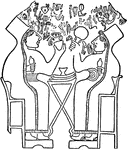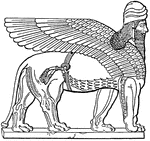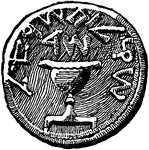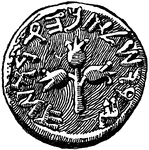Search for "Mesopotamia"

Babylonia Poster
A poster of ancient Babylonia: Chaldea, Assyria, Persia, soldiers, religion, writing, and structures.

Hittite Women
An illustration of two Hittite women sitting. The Hittites were an ancient Anatolian people who spoke…

Feloher from Nineveh
"One of an order of beings, the life-principles or geniuses or tutelary spirits of living beings, believed…

Ostrich
"Struthio camelus, the Ostrich or "Camel-bird" of North Africa now extends from Barbary to Arabia, and…

Excavations at Nippur
"Nippur was the ancient 'Calneh in the land of Shinar.' Excavations here were conducted by the University…
An Assyrian Statue
"The king, a rude heroic figure, stands upright before the god. He holds a club in the left hand, in…




